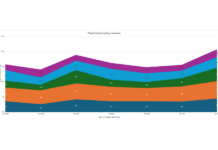According to new research from Coalition Greenwich, 0% of US-based buy-side bond traders report that environmental, social and governance (ESG) impacted their choice of trading counterparty. However, it is unclear if such criteria can be effectively applied to bond trading today, and whether major investment banks could pass ESG categorisation.
In Europe, the policy to determine best execution of a trade by a firm is guided by European Union regulation and directive, mirrored in non-EU European countries such as the United Kingdom, by local rules. These require the inclusion of price, cost, speed, likelihood of execution and of settlement, with the ability to include other factors.
In the US, the Securities and Exchange Commission (SEC) also includes price, speed and likelihood of execution in factors that broker dealers must consider in delivering best execution.
Best execution policies by asset managers can be set at a global level for global clients, to ensure consistency of execution approach and thereby reporting to clients.
As firms can find price formation challenging even in markets with published post-trade price tapes, it is unclear how they would establish a benchmark of ESG criteria for counterparties in a given trade, absent any independent benchmark reporting of ESG criteria for trading. The DESK has confirmed with several traders that such a benchmark does not currently exist.
In addition, as many of the world’s largest bond market investment banks carry criminal convictions for charges such as price fixing, including Barclays, BNP Paribas, Citicorp, Credit Suisse, JPMorgan Chase & Co., The
Royal Bank of Scotland and UBS, if ESG criteria were to be applied, it could potentially be a barrier to accessing liquidity from these important market makers.
The report also found that more than half a trillion dollars of green bonds were issued in 2021, the highest level since the market was defined. This category encompasses both bonds that include incentives based on issuer behaviour, i.e. cutting their carbon footprint and those for which the proceeds are used for environmental and/or social projects.
Report author, Kevin McPartland, head of market structure and technology research at Coalition Greenwich, wrote, “While the investment returns and ultimate impact of these bonds remains a huge source of debate, and 2022 market conditions through May have proven challenging for bond issuance broadly, the long term demand for green bonds is undeniable. This investor demand has then brought forth the need to trade these bonds in the secondary market, with portfolio managers looking for new paper as interest rates and the total number of issuers rise. Based on our interviews with 50 US based buy side bond traders in the fourth quarter of 2021, 64% said they had in fact traded Green Bonds in the past year with another 8% expecting to in the year ahead.”
©Markets Media Europe 2025


























